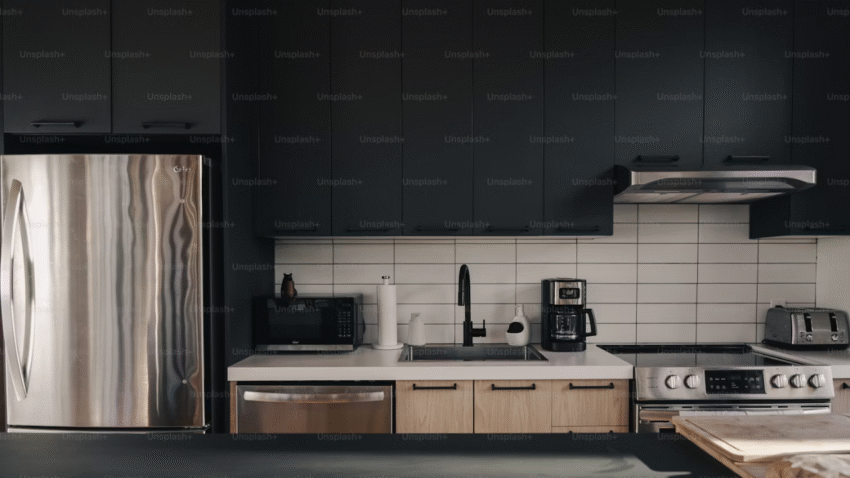Introduction
Is that squeaky cabinet door driving you crazy every time you open it? You’re not alone. A squeaky door might seem like a minor annoyance, but over time it can become a real frustration in your kitchen routine. Luckily, learning how to fix a squeaky cabinet door is a simple DIY task that takes just a few minutes and minimal tools. In this step-by-step guide, you’ll learn how to silence the squeak, restore smooth movement, and bring peace back to your kitchen.
Why Fixing Squeaky Cabinet Doors Matters in the Kitchen
While a squeaky cabinet door isn’t dangerous, it can disrupt your kitchen’s efficiency and comfort. Frequent use makes the noise unavoidable—and annoying. More importantly, squeaks often indicate wear, rust, or improper alignment, which can lead to more serious hinge issues if ignored.
Benefits of fixing a squeaky cabinet door:
- Restores quiet functionality to your space
- Prevents further hinge wear or damage
- Improves overall kitchen appearance and experience
- Increases the lifespan of your cabinets
This quick fix will help you keep your kitchen feeling clean, smooth, and professionally maintained.
Step-by-Step Guide to Fixing a Squeaky Cabinet Door
1. Identify the Squeak Source
First, determine which hinge (or hinges) are making noise.
Steps:
- Slowly open and close the cabinet door
- Listen closely to where the sound is coming from
- Lightly press on each hinge to test for looseness or stiffness
Pro Tip: If multiple doors are squeaky, address each one individually—some may need more attention than others.
2. Tighten Loose Screws
Sometimes the squeak comes from loose screws causing metal parts to rub or shift.
What you’ll need:
- Phillips head screwdriver (or flathead, depending on hinge type)
How to tighten:
- Open the cabinet door
- Check all screws on both the door and cabinet frame sides
- Tighten each screw snugly, but avoid over-tightening
Kitchen Tip: If a screw keeps spinning or won’t stay tight, use a wooden toothpick dipped in wood glue to fill the hole, then reinsert the screw.
3. Clean the Hinges
Dust, grime, and cooking residue can build up on kitchen cabinet hinges, contributing to squeaking.
To clean:
- Dampen a cloth or cotton swab with warm soapy water or all-purpose cleaner
- Wipe around the hinge mechanism thoroughly
- Dry with a clean cloth before moving to lubrication
Safety Reminder: Avoid spraying cleaner directly into the hinge—it can cause drips and damage nearby wood or finishes.
4. Lubricate the Hinges
The most effective way to stop squeaking is to lubricate the moving parts of the hinge. Choose a safe, non-staining lubricant designed for household use.
Best lubricants for cabinet hinges:
- Silicone spray (clean, dries quickly)
- WD-40 (effective, but may attract dust over time)
- White lithium grease (long-lasting, great for metal-on-metal)
- Petroleum jelly (budget-friendly and non-drip)
- Cooking oil (temporary fix, not recommended long-term)
How to apply:
- Open the cabinet door wide
- Apply a small amount directly to the hinge pivot point or pin
- Open and close the door several times to work the lubricant in
- Wipe away excess with a cloth
Pro Tip: Use a paper towel behind the hinge to catch drips and avoid getting lubricant on the cabinet surface.
5. Remove and Reinstall the Hinge Pin (if needed)
For stubborn squeaks that won’t go away, remove the hinge pin to lubricate it directly.
Steps:
- Use a flathead screwdriver and gently tap upward to loosen the pin
- Remove the pin and wipe off any dirt or rust
- Apply lubricant directly to the pin and the hinge barrel
- Reinsert the pin and tap it back into place with a rubber mallet
Caution: Be gentle to avoid bending the hinge or damaging the cabinet.
6. Replace Worn-Out Hinges (If Necessary)
If your hinge is rusty, bent, or beyond repair, it’s best to replace it.
Steps to replace:
- Remove the screws from the old hinge
- Take the old hinge to a hardware store to find a matching replacement
- Align the new hinge in the same position and screw it in tightly
Bonus Tip: If upgrading hardware, consider soft-close hinges for a quieter, modern upgrade.
Common Mistakes to Avoid
Mistake 1: Using Too Much Lubricant
Solution: A little goes a long way. Excess lubricant can drip, stain, or attract dust.
Mistake 2: Ignoring Loose Screws
Solution: Always check and tighten screws before applying any lubricant.
Mistake 3: Spraying Lubricant on Wood Surfaces
Solution: Use a cloth or precision nozzle to apply only to metal parts.
Mistake 4: Not Cleaning Hinges First
Solution: Clean before you lubricate—dirt and grease buildup can block lubricant from reaching moving parts.
Mistake 5: Using Cooking Oil Long-Term
Solution: Cooking oil can go rancid and attract dirt. Use proper lubricants for lasting results.
Extra Tips & Kitchen Hacks
1. Use a Toothbrush for Tight Spots
Apply a drop of lubricant to an old toothbrush and scrub gently into the hinge’s tightest crevices.
Hack: Great for older cabinets with ornate or hard-to-reach hardware.
2. Mark Hinge Position Before Removing
If you need to remove hinges for deep cleaning or replacement, mark their original location with pencil or masking tape to ensure perfect re-alignment.
3. Keep a Mini Maintenance Kit in the Kitchen
Include:
- Small screwdriver
- Cloth or paper towels
- Lubricant (silicone or lithium grease)
- Cotton swabs
- Extra screws and hinge pins
Pro Tip: Regular maintenance once a month prevents squeaks and extends the life of your cabinet hardware.
Conclusion
Fixing a squeaky cabinet door is a fast, simple project that makes a big difference in your kitchen’s comfort and functionality. With just a few basic tools and a little lubricant, you can silence the squeak, protect your hinges, and keep your cabinets opening and closing smoothly.
🔧 Bookmark this guide and handle squeaky doors like a true kitchen pro—quiet, efficient, and frustration-free!
